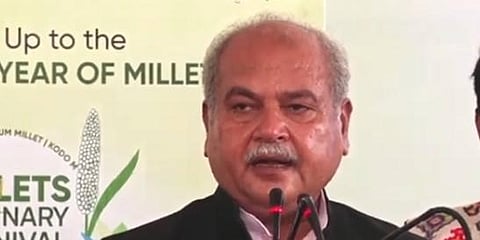

Responding to a query on whether the Centre was able to double farmers income by 2022 as promised, agriculture minister Narendra Singh Tomar said the scheme has "yielded remarkable results."
Responding to a question by MPs in Rajya Sabha on Friday, Tomar listed out 18 schemes that the Centre has implemented to double farmers' income by 2022. Prime Minister Modi had, in 2016, pledged to double farmers' income by 2022.
"Implementation of these schemes has yielded remarkable results towards augmenting the income of the farmers," Tomar told MPs P Santhosh Kumar and MP Kumar Ketkar.
However, Tomar did not directly answer the question of whether farmers' income actually doubled or not.
Tomar instead said that as a part of ‘Azadi ka Amrit Mahotsav’, the Indian Council of Agricultural Research (ICAR) has released a book, which contains a compilation of success stories of 75,000 farmers who have increased their income by more than two times.
CPI leader P Santhosh Kumar and MP Kumar Ketkar asked the agricultural ministry to state the current status of an initiative undertaken by the central govt for doubling farmers' income, whether the objectives were fulfilled and if not, what were the reasons for it.
"The govt has constituted an Inter-Ministerial Committee in April 2016 to examine issues relating to 'Doubling of Farmer's Income (DFI)' and recommend strategies to achieve the same. The final report submitted by the Committee in 2018 recommendations seven sources of income growth," the minister said.
These include an increase in crop productivity and livestock productivity; reduction in the cost of production; increase in cropping intensity; diversification to high-value agriculture; remunerative prices on farmers’ produce and a shift of surplus manpower from farm to non-farm occupations, he added.